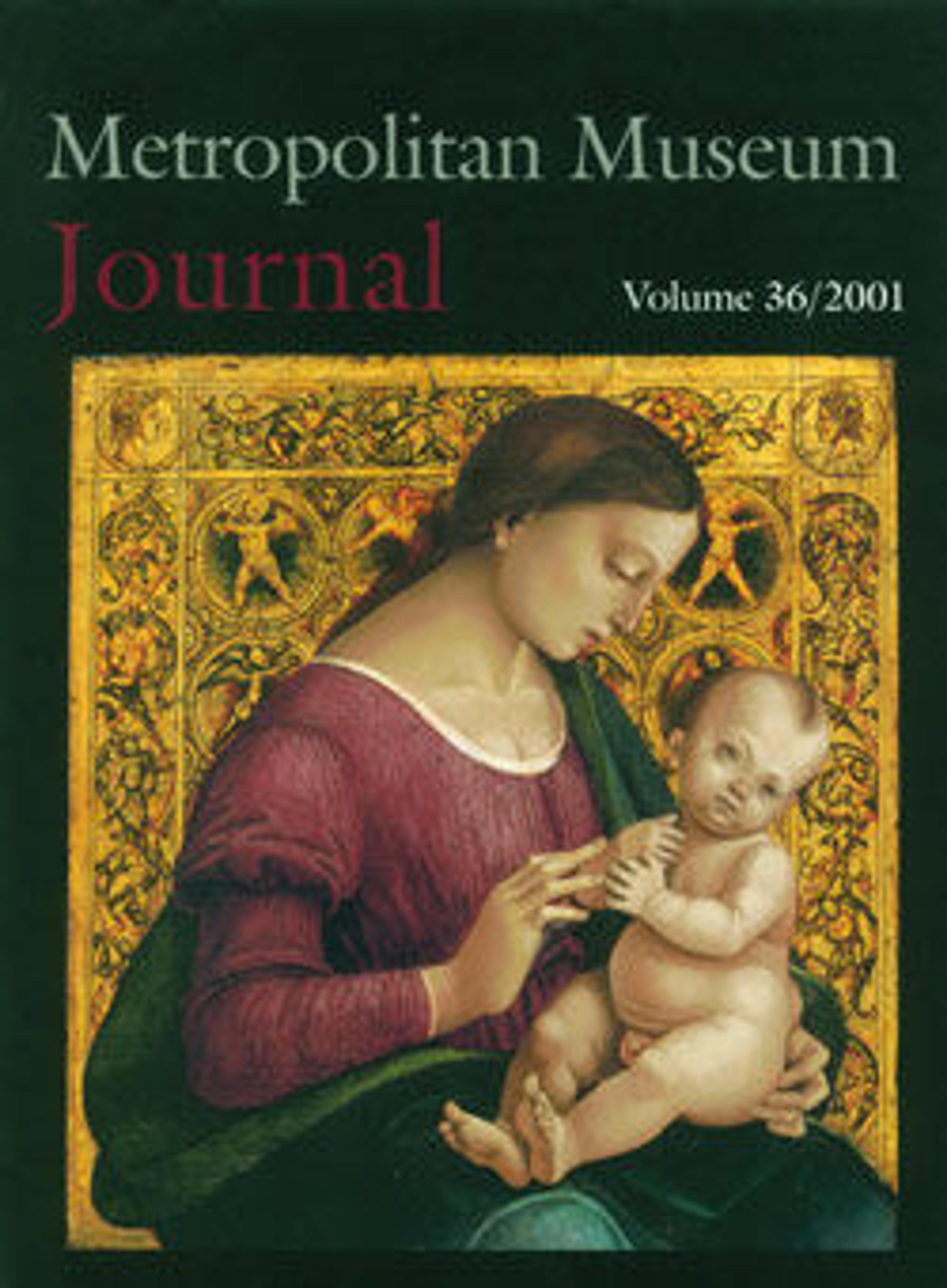Glass lentoid aryballos (perfume bottle)
Semi-opaque yellowish green, with same color handles and cord; trails and blobs in opaque yellow, and trail on cord in opaque white.
Broad flat rim-disk with radiating tooling marks on upper surface; cylindrical neck; almost horizontal shoulder; globular lentoid body; convex bottom; two large vertical ring handles attached to shoulder over cord.
A trail attached unevenly at edge of rim-disk and partially projecting above rim; another unmarvered fine trail wound in a spiral twice around neck; an oval marvered blob applied to both faces of body; a large cord, twisted together with a white trail, attached under handles runs down sides and across bottom.
Intact; some pitting, most of surfaces covered with thick creamy weathering and iridescence.
Together with the other two similar aryballoi displayed here (91.1.1367 and 17.194.309), this bottle belongs to a small group of core-formed glass that may have been made in southern Italy, Sicily, or even Carthage. It has also been suggested that these bottles may have been worn as amuletic pendants around the neck.
Broad flat rim-disk with radiating tooling marks on upper surface; cylindrical neck; almost horizontal shoulder; globular lentoid body; convex bottom; two large vertical ring handles attached to shoulder over cord.
A trail attached unevenly at edge of rim-disk and partially projecting above rim; another unmarvered fine trail wound in a spiral twice around neck; an oval marvered blob applied to both faces of body; a large cord, twisted together with a white trail, attached under handles runs down sides and across bottom.
Intact; some pitting, most of surfaces covered with thick creamy weathering and iridescence.
Together with the other two similar aryballoi displayed here (91.1.1367 and 17.194.309), this bottle belongs to a small group of core-formed glass that may have been made in southern Italy, Sicily, or even Carthage. It has also been suggested that these bottles may have been worn as amuletic pendants around the neck.
Artwork Details
- Title:Glass lentoid aryballos (perfume bottle)
- Period:Hellenistic
- Date:4th–3rd century BCE
- Culture:Greek
- Medium:Glass; core-formed, Group II
- Dimensions:H. 2 in. (5.04 cm); D. 1 5/8 in. (4.17 cm)
- Classification:Glass
- Credit Line:Theodore M. Davis Collection, Bequest of Theodore M. Davis, 1915
- Object Number:30.115.7
- Curatorial Department: Greek and Roman Art
More Artwork
Research Resources
The Met provides unparalleled resources for research and welcomes an international community of students and scholars. The Met's Open Access API is where creators and researchers can connect to the The Met collection. Open Access data and public domain images are available for unrestricted commercial and noncommercial use without permission or fee.
To request images under copyright and other restrictions, please use this Image Request form.
Feedback
We continue to research and examine historical and cultural context for objects in The Met collection. If you have comments or questions about this object record, please contact us using the form below. The Museum looks forward to receiving your comments.
